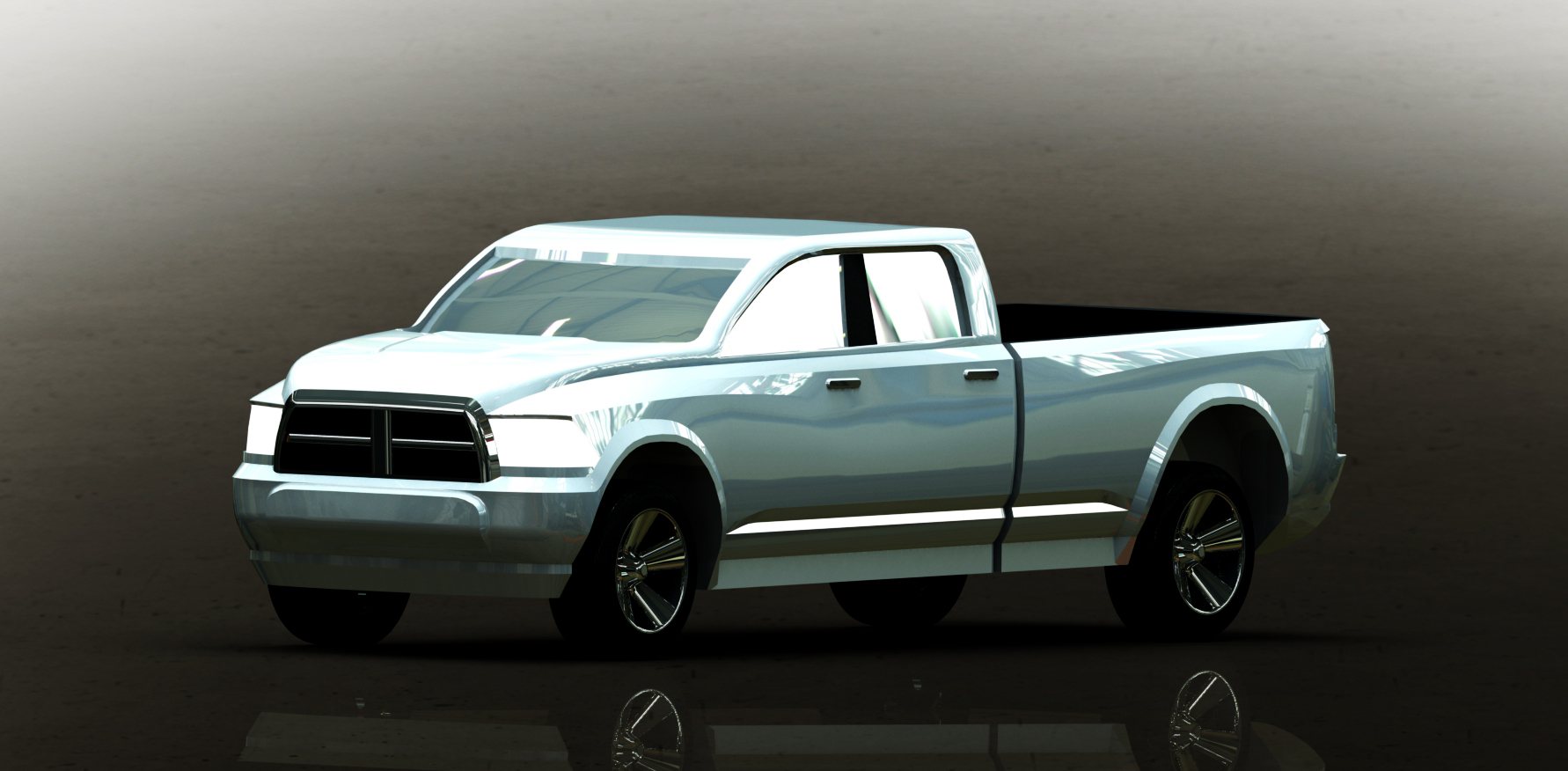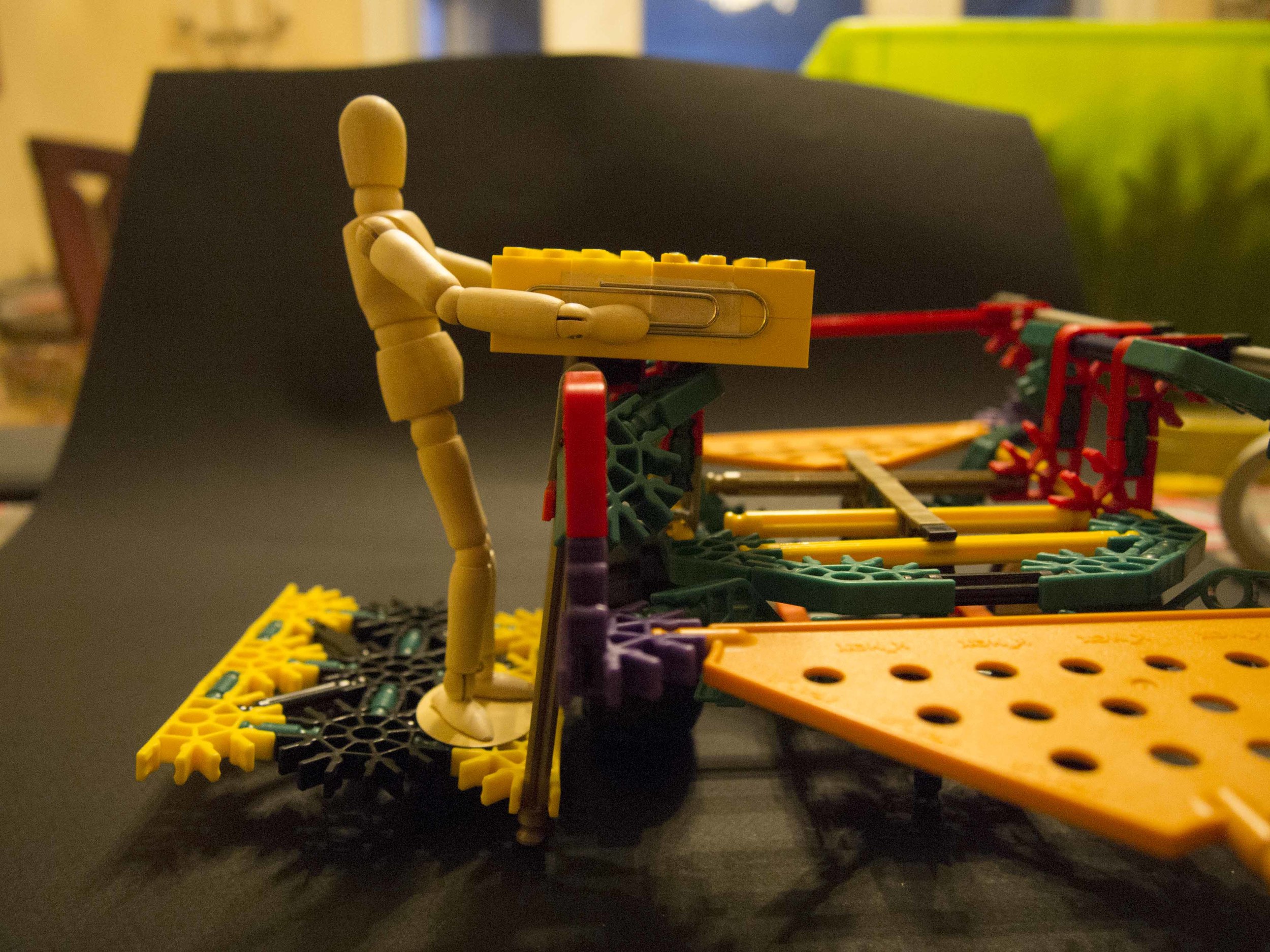Development
I elected, with feedback from peers professors and clients, to proceed with development on the third concept presented in the last post. I set out to refine the design, identify possibly problem areas and build physical mockups where needed.
In this concept iteration, the doors serve three main functions in addition to the enclosure aspect. They provide a step-up for better side access and safer lifting, they provide a workspace for tools and small items, and they provide a bench for sitting and downtime. As before, the handle used to open the enclosure doubles as a stopper that rests against the tire of the truck to prevent body damage.
I had a useful discussion with the OMNR's own task force on issues surrounding their use of trucks. Their fleet vehicle of choice is the Dodge Ram 2500, which I re-created in Solidworks from a couple of isometric photos (minus door mirrors.) I used the School of Industrial Design's makerbots to print a couple of small (1:67 scale) test trucks, because I'll need to use this CAD design later on both for higher-fidelity prototypes and for my final display model.
I broke out the old childhood toys to get into some scale modeling. I wanted to see if my assumptions about ergonomics in lifting were remotely on track, and I think they are. I hope to be able to confirm my suspicions with some real-life testing, but I'll be able to use this mockup to get a better sense of what specific improvements can be made.
The task force noted that the weakest link in existing products tends to be small components such as hinges and fasteners. The trucks are driven at high speed over rough terrain in the backroads of northern Ontario, and it is not uncommon for rear doors to fly off their hinges, sending the contents of the bed onto the road. I've identified what I think will be the weakest point in my design- constant use of the stepping platform could lead to torsion and deformity in the structure of the product, leading to improper fit and closure and eventual failure. I'll need to look at creative ways of solving this problem using physical prototypes and some pen-and-paper physics.







